Client : The Mentor Method
Creating inclusive company cultures
by mentoring women and minorities
Mentor Method connects minorities and women with mentors at hi-tech companies looking for tech professionals. The company promotes inclusive workplace culture by mentoring minority women on career development skills. By providing women the support and tools they need, it helps them advance in their career.
The Challenge
The challenge was to create a learning management system that would actually teach. Many LMS exist but they not effective in teaching the materials and bringing people back to the platform. Statistics shows that 31 % of users never complete their online courses. Although there is high demand for online courses, there is steep decline in course completion rate.The real issue is there in no accountability and measurement from both sides - the mentor and the mentee.
Our goal was to
1. Teach accountability
2. Measure progress
3. Create a platform for deeper engagement
4. Better communication
5. Create deeper Mentor Mentee relationship
Solution
The solution we came up is to provide a LMS( Learning Management System) where the Mentor and mentee can connect virtually.They will go through the three step process.

Design Process
I and my team decided to follow Ideo's Human-centered Design approach and Lean Design process to make sure that our design is validated by user research and usability testing.

Brainstorming
By brainstorming, my team and I found opportunities in three main topic areas to truly understand the context of this project - success in learning with online courses, mentoring process, and diversity & inclusion. We were tasked to create a learning management system (LMS) that would be engaging and help users learn the course material.
Discovery Phase
By concept mapping, we as a team discovered key areas of the project. We focused on three problem areas to understand the context of the project
 Through card sorting we discovered topics areas that would relate to our problem areas. This way we found the who, why and the what for our Learning Management system.
Through card sorting we discovered topics areas that would relate to our problem areas. This way we found the who, why and the what for our Learning Management system.

After thorough review, we used affinity mapping to group important topics under similar categories.

Research Findings
Mentoring Process
Our research proved that mentor mentee sessions were often disorganized and not productive. We chose the courses based on relevance to the user. The courses were in a predetermined order to prepare the mentee and help them figure out where to start. Our research concluded that quizzes were not effective in measuring one's strength. We devised reward system to keep mentees engaged and motivated.
We figured what was important to mentee
Accountability will motivate them to complete courses
Instant feedback from credible sources will guide them to stay on track
This served as our guideline to design our virtual platform.
Success throughout Mentoring Process
One of the major pain point during the interview process was that mentors never provided instant feedback. We chose instant feedback and reward system to keep them motivated.
Most learnings were discovered with 360-feedback - the mentee providing feedback for the mentor and vice versa.
Completion badges and rewards - visually being able to see achievements kept students engaged and motivated.
.
Diversity Inclusion
We began by researching about tech inclusion of minority women. What does tech inclusion mean? Mentor Method wants to provide a platform for underrepresented communities to overcome barriers entering a tech industry by connecting career women to resources that were not possible before.Statistics show that people who are mentored are promoted five times faster.
Our research indicates
• Women represent 22.9% of directors, even though more than half of the American population is female.
• Latino, African American, Asian, or Native American—represent 18.3% of directors.
• Women of color represent just 4.2% of directors;
• 41/60 companies do not have a single woman of color on their board of directors.
There are two kinds of people when it comes to mentoring -
The mentor and the mentee.
A mentor is someone who is an experienced trusted advisor.
A mentee is a person who is mentored by a trusted advisor.
We synthesized from our user interviews what was important to Mentors and Mentee. We planned our mentoring process accordingly.

Discovering an opportunity
A competitive analysis was done to get an overview of similar applications that were already available.
User Interviews and Surveys were conducted to determine users frustrations with current LMS they were using. From our surveys, we learned what aspect of an online platform people enjoy and what makes it more learnable for them. We conducted 12 user interviews and surveyed 23 participants to validate our research and guide our design decision.
We picked up the most important pain points of our users from our interviews.
Persona
The following Mentor and Mentee personas are a synthesis of our 12 User interviews. We interviewed 9 mentees and 3 mentors.
Mentee
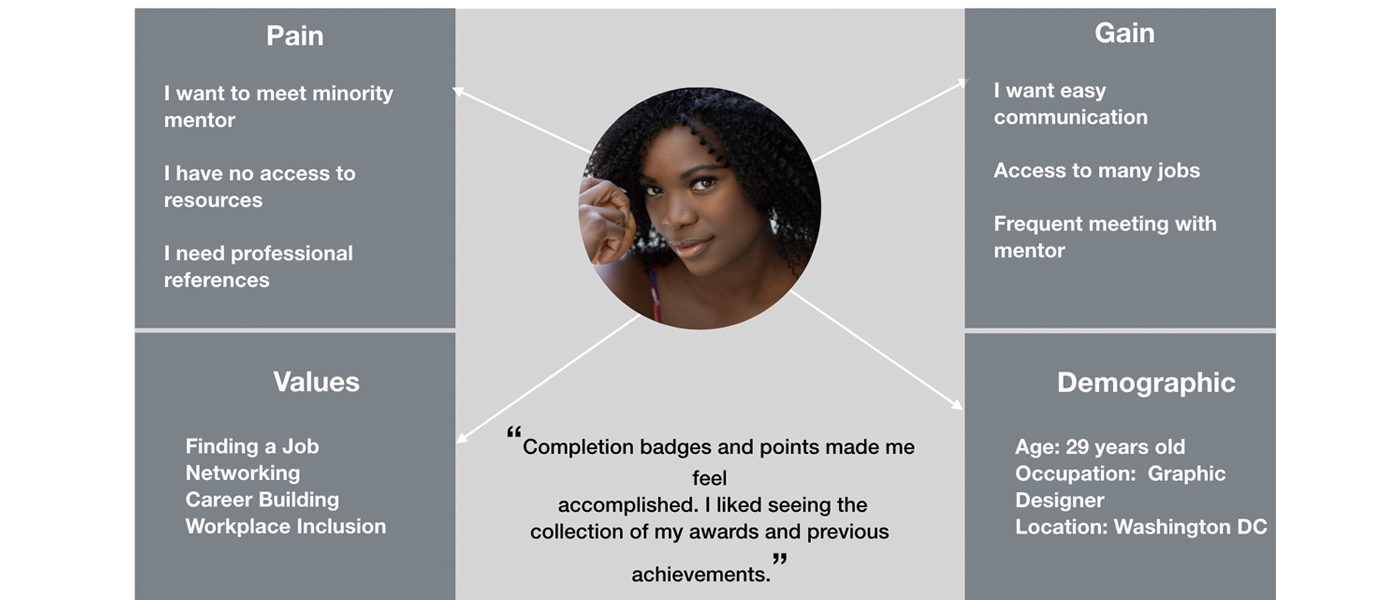
Mentor
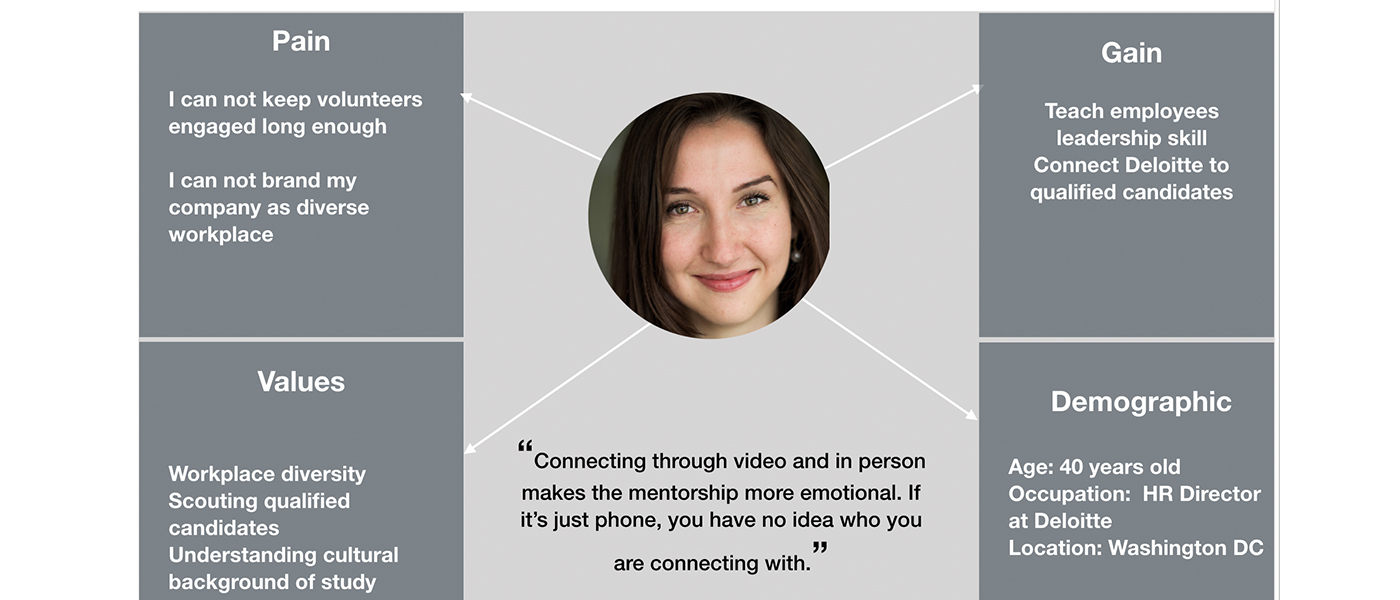
Competitive Analysis
From our competitive analysis, we got insights the reasons for the success and failure of different platforms.We compared two learning platforms. One was Cornerstone and the other one was EDX. Based on that knowledge, we decided what features were important to us. We loved the idea of Gamification and more interactive features to make the learning more engaging.
Cornerstone

Edx

Define Phase
In the second phase of the project, we determined key metrics, created product feature roadmap, and determined structure and flow of the LMS.
After reviewing all user pain points we chose to focus on the few important pain points
1. Communication
User were annoyed with the mentors for not being able to get in touch with them. When they needed help with things that were time sensitive, they were not able to find the help.
2. Disorganized session
Mentors were often disorganized and never had a set agenda when meeting with the users. Users had no idea what to expect or prepare for.
3. Lack of Accountability
Users were dissatisfied because no one was holding them accountable for finishing a course. Not getting any feedback on their work did not motivate them.
4. No measurement of progress
There was not much motivation for users to stay on track as they were not able to see how they were performing.
5. Coursework was not learnable
Learning Platforms were not highly engaging. Users were not able to retain the materials. Most users preferred a fun way of learning.
Goals for LMS
Our feature requirements were based on the user needs and user pain points. We also took into account business goals for the project.
Mentee:
• Customized match with mentor
• A clear Agenda
• Feedback system for succees throughout the mentorship
• A way to measure progress
• Gamification for learnability
Mentors & Companies:
• Increased employee engagement
• Diverse hiring opportunities
• Branding as a Diverse and Inclusive Company
Solution

Prototyping and Validation
We created Lo-Fi mockups and tested the prototype with 5 new individuals. Insights from the validation test led to reiterate on most of the screens. We created Hi-Fi mockups of proposed solutions in Sketch. Below are the Hi-Fi mockups of final solutions.
Better communication
Pain Point1: User were annoyed with the mentors for not being able to get in touch with them. When they needed help with things that were time sensitive, they were not able to find the help.
Design Solution: Create a virtual mentorship where mentor and mentee can meet on a weekly basis

Mentee:
• Users will have the time to discuss concerns and progress for the week.
• Transparent communication and better relationship
Customized match with mentor
Pain Point2: Mentors not being able to understand the cultural context of the mentee
Design Solution: Create customized match to find a mentor of choice

Mentee:
• Mentees were able to find who they want to mentor with
• They were able to select based on their search preference
• Understanding the cultural context of the user was important
A clear agenda
Pain Point3: Users had no idea what to expect or prepare for as mentors were often disorganized
Design Solution: A planned agenda
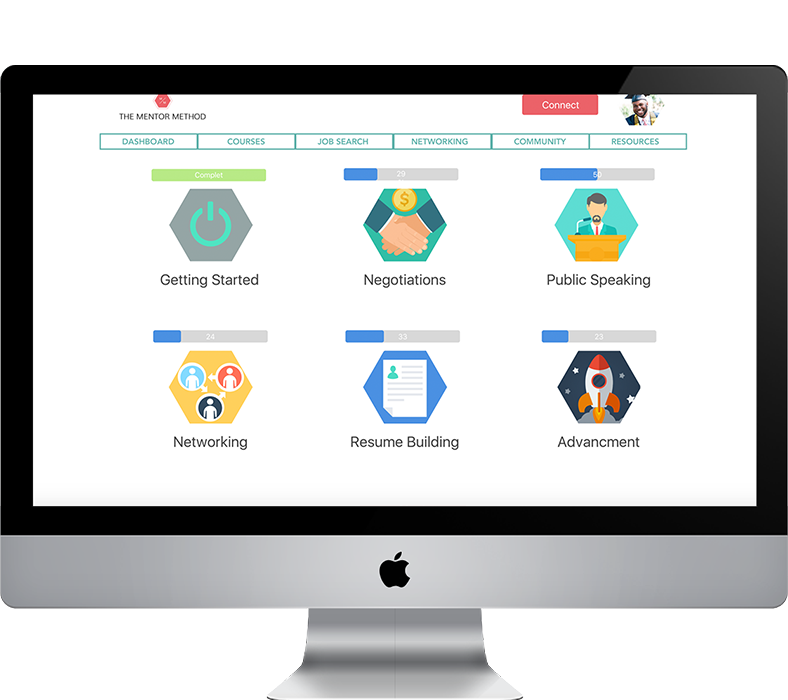
• Both types of users should know exactly what one expects from the other and when meetings should occur.
• Mentors and mentees must first complete the initial module titled "Getting Started" before starting mentorship.
A way to keep accountability
Pain Point4: Users were dissatisfied because no one was holding them accountable for finishing a course.
Design Solution: Add a system to provide feedback
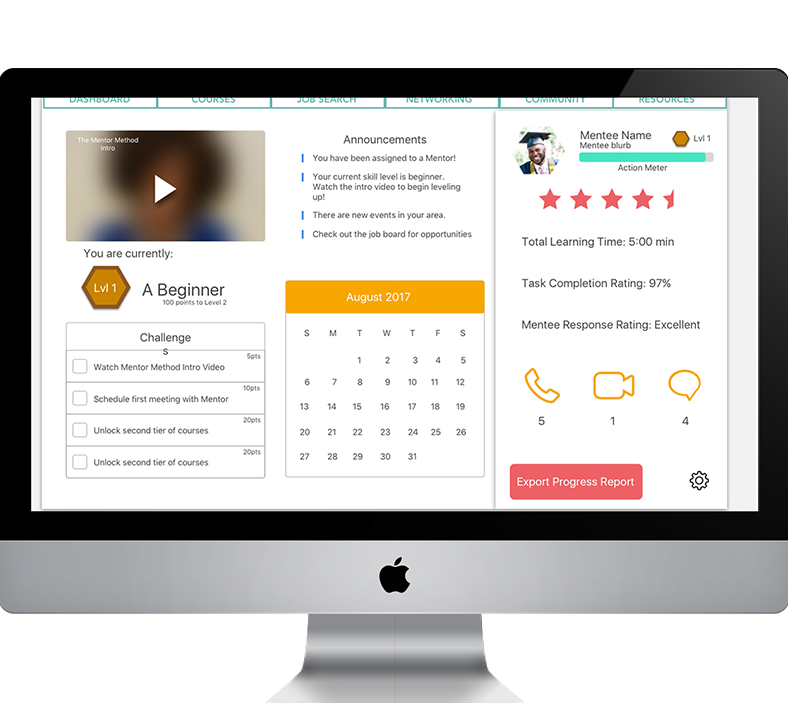
• After each session is complete, both mentor and mentee will have a chance to provide feedback for their meeting. and vice versa
• The progress report will review each session. Both Mentor and mentee will be able to earn points based on performance.

Gamification to learn
Pain Point5: Users were not able to retain the materials. Most users preferred a fun way of learning
Design Solution: Add gamification to engage learners
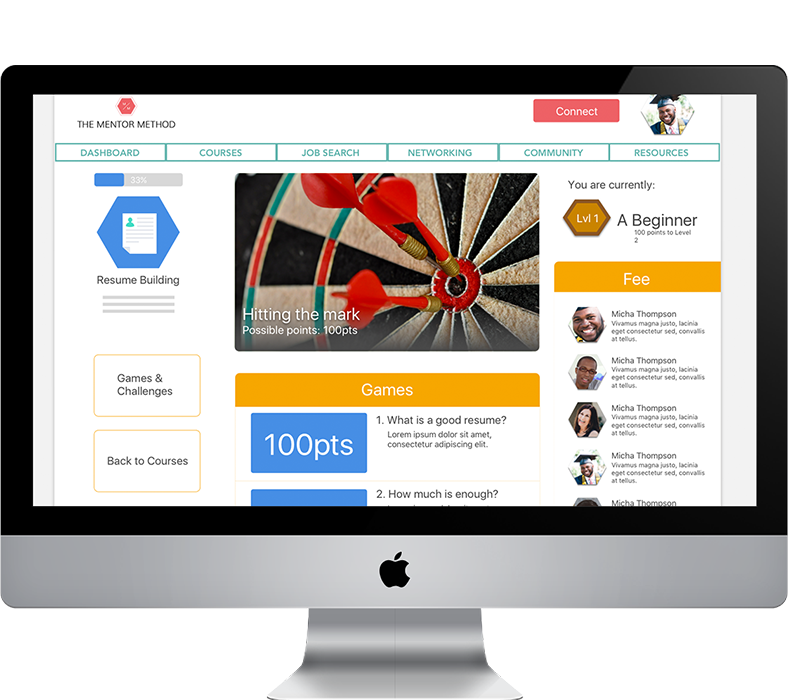
• Based on performance both users will be able to earn points.
Points will determine potential candidates if they should move to the next level.
• If the users were actively engaged and complete the required course materials, they qualified for a prize to win free course materials.
Final thoughts
Although we encountered many challenges during this project, I learned the value of research. We were not able to gather much information from the company. That pushed us to engage in in-depth research. Research helped us with our ideas and changing direction when ideas failed.
The outcome is that companies will have the opportunities to find diverse talent through mentorship. More mentors can volunteer and give back to the community. They can advocate for their companies and diversity in the workplace.
More minority women can land their dream jobs through mentorship. They will have the ability to advance in their careers
by equipping them with skills they learned.



 Through card sorting we discovered topics areas that would relate to our problem areas. This way we found the who, why and the what for our Learning Management system.
Through card sorting we discovered topics areas that would relate to our problem areas. This way we found the who, why and the what for our Learning Management system. 












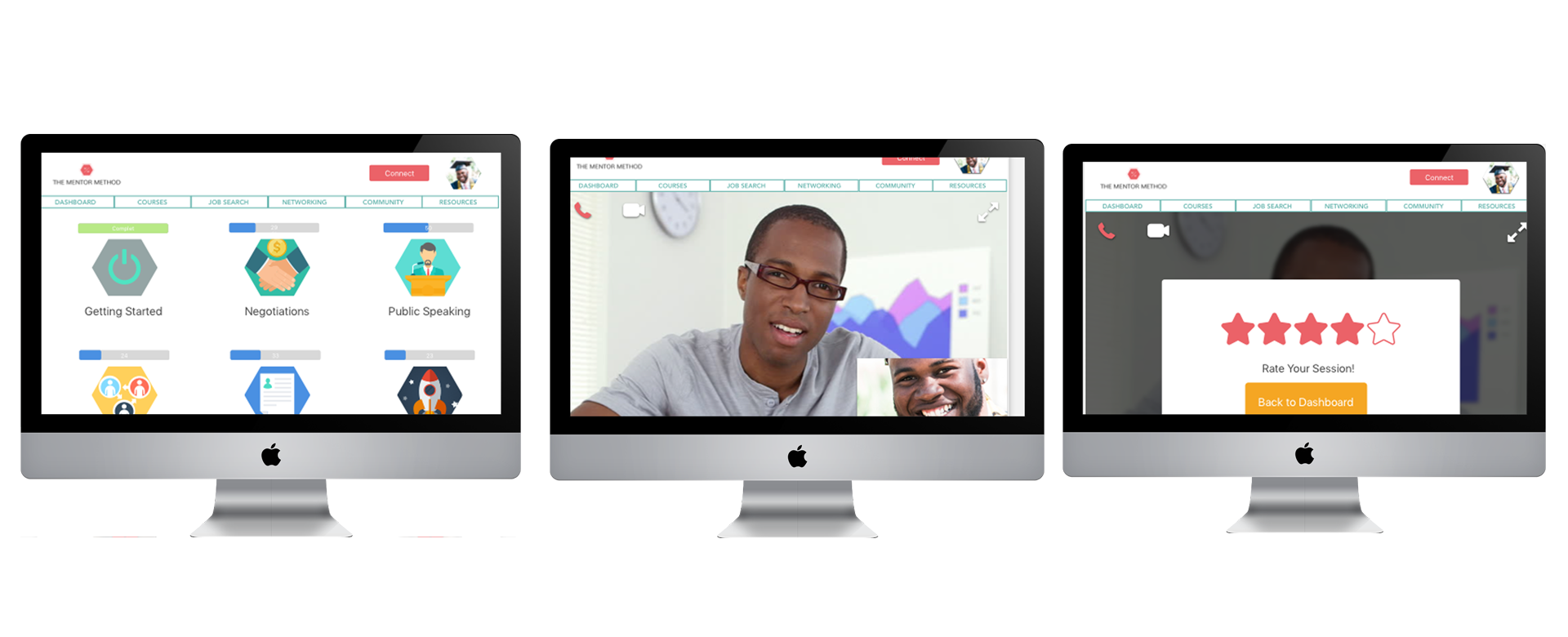
Mentor Method
A virtual mentoring experience that educates career development skills in engaging learnable way